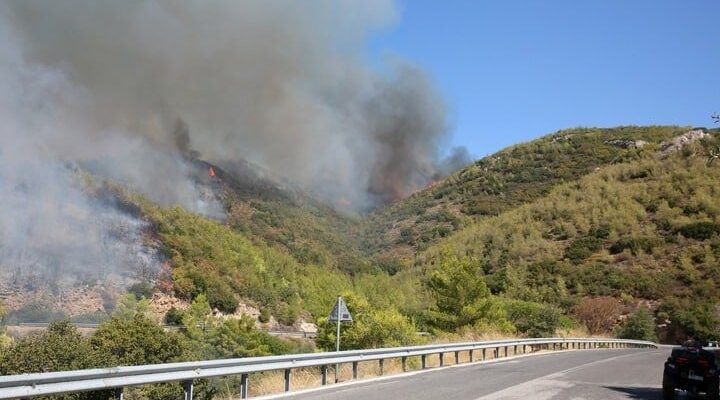As Greece battles with huge wildfires near Athens, a recent California study, stressed that the risk of rapidly spreading forest fires has increased significantly as a result of climate change.
This study, which has implications for preventing future disasters such as those in Canada, Greece, and Hawaii emphasizes the importance of taking action.
Researchers at the Breakthrough Institute, a nonprofit research center, have determined that the warming caused by human activities has led to a 25 percent average increase in the occurrence of “extreme” wildfires compared to the time before industries took off. This crucial insight comes from a study published in the journal Nature.
Studying a range of fires that occurred between 2003 and 2020, researchers used machine learning to investigate how higher average temperatures and drier environments contribute to the most rapidly spreading fires. These are fires that consume more than ten thousand acres (four thousand hectares) of land in a single day.
The influence of climate change, however, wasn’t consistent across all fires, according to Science Alert.
Under specific circumstances in which the environment was partially dry, the warming of the planet pushed conditions past critical points, greatly increasing the likelihood of extreme fires. Yet, in situations of very dry conditions, the impact was somewhat less pronounced.
Patrick Brown, the main author of the study, explained in a statement that we need to focus our utmost attention on regions and periods which have encountered conditions that are slightly more humid than the critical thresholds.
These are now being shifted from the moister side to the drier side due to the underlying warming, Brown further expressed.
Extreme forest fire risk could increase by 59 percent by end of century
Scientists conducted calculations that project a potential average risk escalation of 59 percent by the conclusion of this century.
The projection holds true in a scenario characterized by “low emissions.” This refers to global warming kept in check at 1.8 degrees Celsius above levels of the pre-industrial era. However, this risk could surge as high as 172 percent in a scenario with unrestricted high emissions.
Notably, the Earth’s surface temperature has already risen by 1.2 degrees Celsius, according to Science Alert.
By analyzing information from documented fires, researchers assessed the likelihood of a particular fire transforming into an “extreme” blaze. Subsequently, they employed computer models to quantify the extent to which the temperature rise since the industrial era has heightened risk.
Greece was once again at the center of Europe’s fire season during the summer last year. The nation experienced the most devastating wildfire in European Union records.
Fires destroyed an estimated 1,750 square kilometers (675 square miles) last year. Deliveries to the country of seven new Canadian-made DHC-515 firefighting aircraft, part of a wider European Union order by six member states, are set to begin in 2027.



